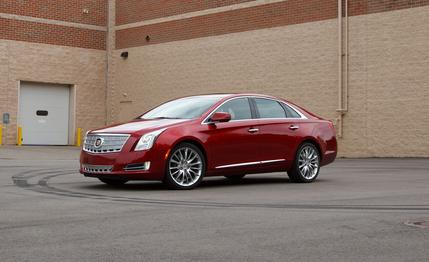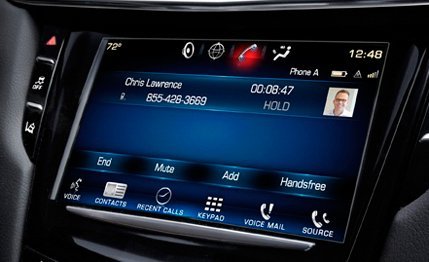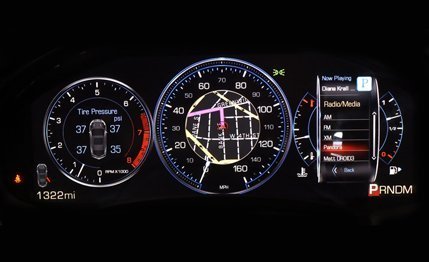 Instrumented Test
Instrumented Test

Forget the snoozer STS and the phlegmatic DTS. The XTS now sits atop the Cadillac lineup as the brand’s new flagship (well, at least until the Mercedes S-class-targeting, über-luxury rear-drive sedan based on the upcoming Omega platform arrives a few years down the road). Sporting the latest interpretation of Cadillac’s Art and Science design theme, the XTS looks like a CTS in a Big & Tall suit. It rides on GM’s Epsilon II platform, shared with the Buick LaCrosse and upcoming Chevrolet Impala. Propping up those more modest underpinnings are goodies such as magnetorheological shocks, anti-torque-steer HiPer strut front suspension (also seen on the Buick Regal GS), and Brembo front brakes as part of an overall effort to elevate the XTS above the likes of American counterparts such as the Chrysler 300 and Lincoln MKS and into the loftier luxury realm occupied by the Audi A6, Mercedes-Benz E-class, and Infiniti M37/56. It’s an ambitious effort, and even though our test car came loaded up with modern luxury standards such as a driver safety suite (forward-collision alert, blind-spot warning, cross-traffic alert, attention monitoring, haptic safety alert seat, and so on) and all-wheel drive, the XTS doesn’t quite live up to its aspirations.

Our disappointment stems mostly from CUE (Cadillac User Experience), Cadillac’s great leap forward into the modern world of infotainment, highlighted by a center touch screen that serves as the central command for audio, navigation, phone, and climate settings. CUE so dominates our impressions of the new XTS that most of this review revolves around that system, due in equal parts to CUE’s notability and the XTS’s lack thereof.
Where Are the CUE Cards?
CUE is focused around the center stack, which includes the aforementioned touch screen (eight inches measured diagonally) with a set of capacitive-touch buttons below. The buttons—power, volume, a home-screen shortcut, and climate settings—are located on a floating panel that flips open to reveal a storage bin behind. Premium and Platinum trim models (including our all-wheel-drive Platinum test car) come standard with a beautiful, high-resolution, 12.3-inch reconfigurable instrument cluster.

The XTS interior is not just pretty, it’s distinctive—an important factor in Cadillac’s establishing itself as the definitive American luxury brand. But this is also a case of design over function. There are as many buttons as in a conventional car, but none of them works as well as an actual button or, god forbid, a dial. We’re just thankful the windows are actuated with real switches. Take the volume control as an example. It adjusts in large increments with a sliding motion and executes small adjustments with a tap. The sliding works, but it’s difficult to get a precise adjustment (which is easy using a knob). Tapping works, too, but with a frustratingly slow response time. It’s worth noting that Cadillac is not alone in this buttonless approach, and we have yet to fall in love with any such system, Ford’s MyFord Touch included. Cadillac is unique in the haptic feedback in the XTS (as well as the ATS sedan and SRX crossover), where a slight vibration gives a tactile response to inputs on the panel, which definitely helps the experience.
That haptic feedback is present on the touch screen as well, but the screen in our test car was woefully inaccurate, with a number of C/D staffers complaining about missed taps. The biggest culprit for that problem is the favorites, a row of buttons that are ever present on the bottom edge of the screen (similar to radio presets but programmable for any radio station, destination, or contact). Slip up a little when manually tuning the radio, for instance, and you’re suddenly dialing Aunt Judy. The touch screen’s inaccuracy is exacerbated by its distance from the driver. If you own a tablet, try working it with your arm half-extended and then at a full arm’s length. As the distance increases, it becomes correspondingly more difficult to make selections with pinpoint accuracy. In the XTS, the touch screen lies outside a comfortable distance for consistent usability.